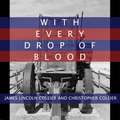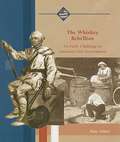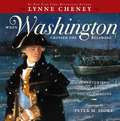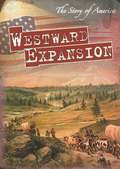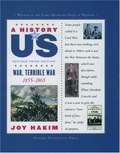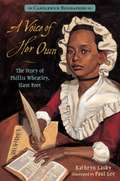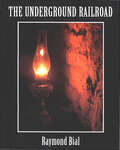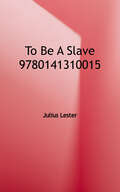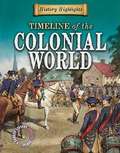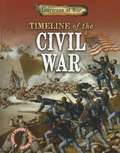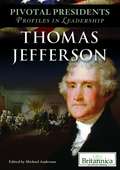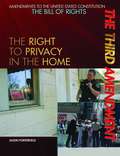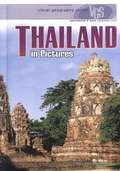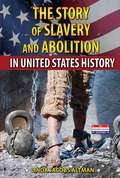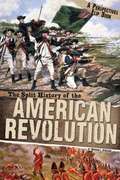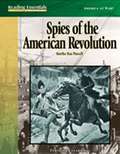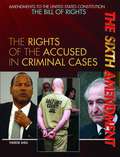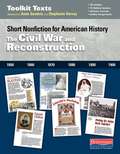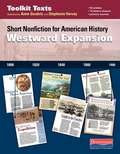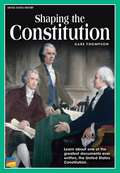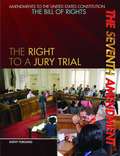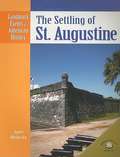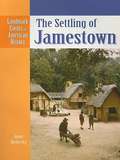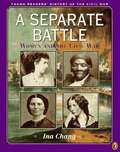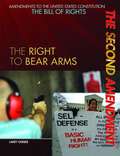Special Collections
District List: NYC Core Curriculum 7th - Social Studies
Description: The New York City Core Curriculum program aims to provide a high-quality curricula to NYC students through a seamless instructional program across grades and subjects. This list has been curated by #NYCDOE for 7th Grade Social Studies materials.
- Table View
- List View
With Every Drop of Blood
by James Lincoln Collier and Christopher CollierFourteen-year-old Johnny promised his father, who was gravely wounded while fighting for the South, that he would take care of the family and not run off to fight. But when there's a request to take his mules and wagon on a bold mission to supply the Rebel troops, Johnny can't resist the chance for revenge as well as a good payday. Times are tough without his father on the farm, and food is scarce for everyone. But his plan goes awry when he's captured by Cush, a runaway slave. Johnny doesn't like taking orders from a black man, but he has no choice: He's heading for prison camp wondering what will become of his family and himself. Along the way, he learns some surprising views about the war, forms an unlikely bond with Cush, and finds his long-held feelings about the issues surrounding the Civil War brought into question. This critically acclaimed novel is geared for children Grades 5 and up.
The Whiskey Rebellion
by Katy SchielWhen Congress enacted a 25 percent excise tax on domestically produced distilled spirits, grain growers and distillers were irate. Especially upset were the small producers of alcohol who began to organize an opposition. When mobs organized an opposition, a tax collector was tarred and feathered and another had his home burned. Shots were exchanged. President Washington called upon the rebels to disperse, but his pleas were ignored. A force of nearly 13,000 men was raised and quelled the opposition, which quickly faded away.
When Washington Crossed The Delaware
by Lynne Cheney and Peter M. FioreChristmas night, 1776, was a troubled time for our young country. In the six months since the Declaration of Independence had been signed, General George Washington and his troops had suffered defeat after defeat at the hands of the British. It looked as though our struggle for independence might be doomed, when Washington made a bold decision. He would lead the main body of his army across the Delaware River and launch a surprise attack on enemy forces.
Washington and his men were going against the odds. It seemed impossible that the ragtag Americans could succeed against the mightiest power in the world. But the men who started across the icy Delaware loved their country and their leader. Under his command they would turn the tide of battle and change the course of history.
Now in paperback for the first time, this story of the military campaign that began on Christmas night in 1776 will teach readers about the heroism, persistence, and patriotism of those who came before them.
Westward Expansion
by Greg RozaThere were many reasons for Americans to move west in the 1800s. The gold rush, religious movements, new farmland, and even a transcontinental railroad brought people from across the country to settle.
This book highlights the major causes and effects of Americas push westwardfrom the Erie Canal to the rise of cowboys. With the help of detailed photographs, readers discover the events that expanded America from the Atlantic Ocean to the Pacific Ocean.
War, Terrible War
by Joy HakimRiveting, moving, and impossible to put down, War, Terrible War takes us into the heart of the Civil War, from the battle of Manassas to the battle of Gettysburg and on to the South's surrender at Appomattox Court House. Follow the common soldiers in blue and gray as they endure long marches, freezing winter camps, and the bloodiest battles ever fought on American soil. Off the war fields, War, Terrible War captures the passion and commitment of abolitionists and slave-owners alike in their fiery debates throughout the land. With profiles of Abraham Lincoln, Robert E. Lee, Ulysses S. Grant, John Brown, Harriet Tubman, Jefferson Davis, soldiers on both sides, slave owners, abolitionists, average citizens, and others, War, Terrible War is the compelling story of a people affected by the horrors of war during this tragic and dramatic period in A History of US. This text is listed as an example that meets Common Core Standards in English language arts in grades 4-5 at http://www.corestandards.org.]
A Voice Of Her Own
by Kathryn Lasky and Paul LeeIn 1761, a young African girl was sold to the Wheatley family in Boston, who named her Phillis after the slave schooner that had carried her. Kidnapped from her home in Africa and shipped to America, she'd had everything taken from her family, her name, and her language. But Phillis Wheatley was no ordinary young girl. She had a passion to learn, and the Wheatleys encouraged her, breaking with unwritten rule in New England to keep slaves illiterate. Amid the tumult of the Revolutionary War, Phillis Wheatley ultimately had a book of verse published, established herself as the first African American woman poet this country had ever known. She also found what had been taken away from her and from slaves everywhere: a voice of her own.
The Underground Railroad
by Raymond BialBy ones, twos, and threes, in the years before the Civil War thousands of enslaved people slipped through the night on their way to freedom, riding the Underground Railroad. Hidden and hunted, the escape of southern slaves to the North remains a compelling event in American history. Within the pages of this book are documented, in prose and elegantly articulate photographs, examples of "stations" on the Railroad, along with images of the routes, lives, and hardships of both the "passengers" and "conductors."
To Be A Slave
by Julius LesterA compilation of reminiscences of slaves and ex-slaves about their lives, from those leaving Africa through the Civil War into the 20th century.
Newbery Medal Honor Book.
A Timeline of the Colonial World
by Charlie SamuelsChronicles the important events, people, and locations during the Colonial era, including the age of exploration, the settling of North America, the American Revolution, and the colonization of Australia and Africa.
Timeline Of The Civil War
by Charlie SamuelsPresents a timeline of the Civil War, including causes of the conflict, the life of soldiers on both sides, and the end of the war.
Thomas Jefferson
by Michael AndersonAs skilled at architecture and inventing as he was at politics, Thomas Jefferson was a man of many talents who was invaluable to the founding of the United States. After loaning his expertise to writing the Declaration of Independence, Jefferson went on to serve as the third U.S. president, nearly doubling the size of the United States during his term. Jeffersons extraordinary life and accomplishments are recounted in this engaging volume.
The Third Amendment
by Jason PorterfieldThe Third Amendment guarantees that soldiers cannot be quartered with U.S. citizens during times of peace. At the time of its passage, this amendment made a significant difference in the lives of American citizens. It formed a separation between Americas military and its civilians. Although seldom cited today in court cases, the Third Amendments impact has been long lasting, and has given rise to military bases all over the country. This book richly explores the amendment and its history. Fascinating sidebars and photographs support the text.
Thailand in Pictures
by Stacy Taus-BolstadDescribes the geography, history, government, economy, people, and cultural life of Thailand.
The Story of Slavery and Abolition in United States History
by Linda Jacobs AltmanTraces the history of slavery in the United States, focusing on the abolition movement and the final steps that freed an enslaved people.
The Split History of the American Revolution
by Michael Burgan and Lawrence Babits and Kathleen Baxter and Robert L. McConnellPeople from Great Britain came to North America to start new lives in the 13 American colonies. In the beginning colonists accepted British rule without question. But by the mid-1700s, things were changing. Many colonists wanted the right to govern themselves. The British government felt as if the colonists were being ungrateful. By 1775 war between the two sides was inevitable.
Spies Of The American Revolution
by Martha Sias PurcellExplains the purpose of spies during the American Revolution and describes the actions of several spies including Nathan Hale, General Benedict Arnold, Emily Geiger, and Patience Lovell Wright.
Sixth Amendment
by Therese SheaOne of the hallmarks of the American criminal justice system is the right of all people accused of a crime to defend themselves in a speedy, public trial. According to the Sixth Amendment, individuals accused of crimes have a number of important rights, including: the right to a jury of their peers, the right to be informed of the charges against them, the right to an attorney and witnesses in their defense, and the right to face their accuser.
This book reviews the history of the Sixth Amendment, including the events that inspired it and the major Supreme Court cases related to it. In a concise and interesting way, the author explains the unalienable rights that are at the heart of our justice system.
Short Nonfiction For American History
by Stephanie Harvey and Anne Goudvis"We turn information into knowledge by thinking about it. These texts support students in using the Toolkit's comprehension and thinking strategies as tools to acquire and actively use knowledge in history."-Stephanie Harvey and Anne Goudvis
To support cross-curricular strategy instruction and close reading for information, Stephanie Harvey and Anne Goudvis have expanded their Toolkit Texts series to include a library of short nonfiction for American history with 10 all-new Toolkit lessons.
Building on selections from popular children's magazines as well as original articles, these engaging, age-appropriate texts will keep your active literacy classroom awash in historical resources that depict the controversies, issues, and dramas that shaped historical events, including the exploits of lesser-known individuals.
These short nonfiction texts for American history include:
10 comprehension strategy lessons for close reading in content literacy.
Short nonfiction articles on a wide range of topics and at a variety of reading levels.
A bank of historical images, primary source documents and artifacts, plus primary source documents and artifacts bibliographies, web sites, and ideas for online investigations.
A Digital Companion Resource provides all of the texts, primary source documents, and the image bank in a full-color digital format so you can display them for group analysis.
Lesson Title 1 Read and Annotate: Stop, think, and react using a variety of strategies to understand 2 Annotate Images: Expand understanding and learning from visuals 3 Build Background to Understand a Primary Source: Read and paraphrase secondary sources to create a context for a topic 4 Read and Analyze a Primary Source: Focus on what you know and ask questions to clarify and explain 5 Compare Perspectives: Explore the different life experiences of historical figures 6 Read Critically: Consider point of view and bias 7 Organize Historical Thinking: Create a question web 8 Read with a Question in Mind: Focus on central ideas 9 Surface Common Themes: Infer the big ideas across several texts 10 Synthesize Information to Argue a Point: Use claim, evidence, and reasoning
The CCSS and other state standards expect that children will read a variety of texts on a common topic and synthesize the ideas and information.
These short nonfiction texts were selected using the following criteria: Interest/Content Because kids love the quirky and the unexpected, these texts highlight important but often lesser-known or unrecognized perspectives and voices from the past. Visual literacy Since visual literacy is an essential 21st-century skill, these texts include historical images, paintings, and maps, as well as diagrams, timelines, charts, and photographs. Writing quality and accuracy To foster student engagement, these articles feature vibrant language in an active voice supported by a rich assortment of visual features. Reading level/complexity These texts are written at a range of reading levels and include a wide variety of topics to capture the interests of all readers.
Short Nonfiction For American History
by Stephanie Harvey and Anne Goudvis"We turn information into knowledge by thinking about it. These texts support students in using the Toolkit's comprehension and thinking strategies as tools to acquire and actively use knowledge in history."-Stephanie Harvey and Anne Goudvis
To support cross-curricular strategy instruction and close reading for information, Stephanie Harvey and Anne Goudvis have expanded their Toolkit Texts series to include a library of short nonfiction for American history with 10 all-new Toolkit lessons.
Building on selections from popular children's magazines as well as original articles, these engaging, age-appropriate texts will keep your active literacy classroom awash in historical resources that depict the controversies, issues, and dramas that shaped historical events, including the exploits of lesser-known individuals.
These short nonfiction texts for American history include:
10 comprehension strategy lessons for close reading in content literacy. Short nonfiction articles on a wide range of topics and at a variety of reading levels. A bank of historical images, primary source documents and artifacts, plus primary source documents and artifacts bibliographies, web sites, and ideas for online investigations. A Digital Companion Resource provides all of the texts, primary source documents, and the image bank in a full-color digital format so you can display them for group analysis.
Shaping the Constitution
by Gare ThompsonFind out about the ideas in the United States Constitution and the men who helped create it.
The Seventh Amendment
by Kathy FurgangWhile jury trials in criminal cases are recognized as vitally important to safeguarding the Constitutional rights of the accused, the right to a jury trial in civil cases is a less understood, celebrated, and valued right. This book is an invaluable reminder of just how important the Seventh Amendment is to the promotion and preservation of fairness and justice in America. By entrusting a jury of ordinary and impartial citizens to decide the outcome of lawsuits, the framers of the Constitution and Bill of Rights removed the power from the judges, who could potentially be swayed and corrupted. The Seventh Amendment levels the playing field, guaranteeing that a citizen's voice and interests carry as much weight as that of a wealthy individual, major corporation, or powerful government. The historical context that motivated the drafting and passage of this amendment is discussed, as is the evolution of civil law, jury trials, and the application of the Seventh Amendment in American history, from colonial times to the present. Contemporary, straight from the headlines cases-including Toyota's recent woes-illustrate the relevance of the Seventh Amendment and its application to cases involving consumer protection, environmental cleanup, medical malpractice, and corporate wrongdoing.
The Settling Of St. Augustine
by Janet RieheckyTraces the history of St. Augustine, Florida, from its founding and development as a Spanish colony and military outpost in 1565 through the early eighteenth century, and discusses the impact of European colonialization on the native
The Settling Of Jamestown
by Janet RieheckyExamines the founding of the English colony at Jamestown, its struggle for survival, and its eventual decline.
A Separate Battle
by Ina ChangDescribes the roles women played during the Civil War and how women influenced the course of the war.
The Second Amendment
by Larry GerberThe United States has the most guns per capita of any country in the world. Many Americans value the right to bear arms, which they believe is guaranteed by the Second Amendment to the Constitution. Others believe that the Second Amendment only guarantees the right for organized militias to own guns. This book surveys the history of the Second Amendment and gun ownership in the United States, and explores how the amendment continues to affect us today.
